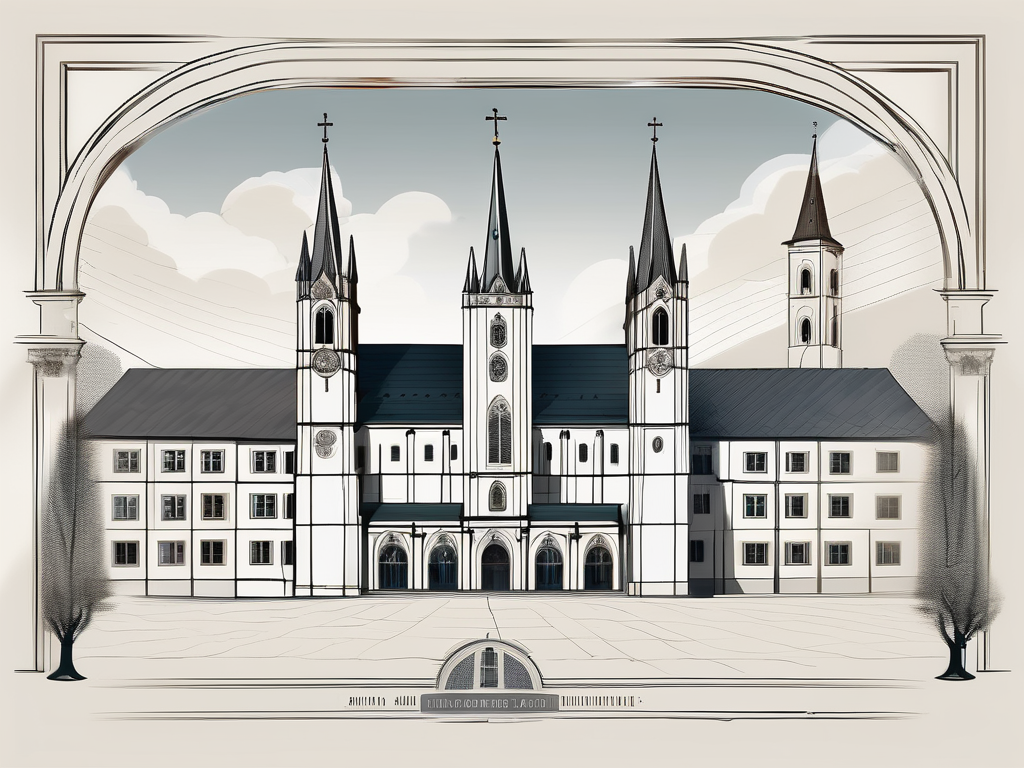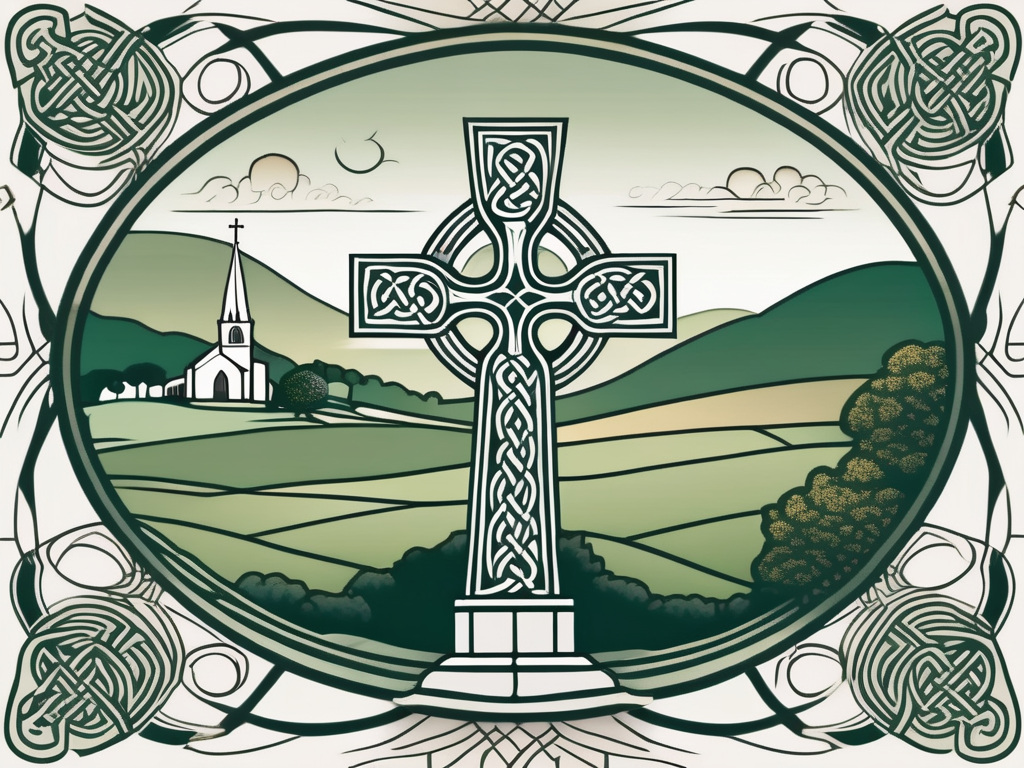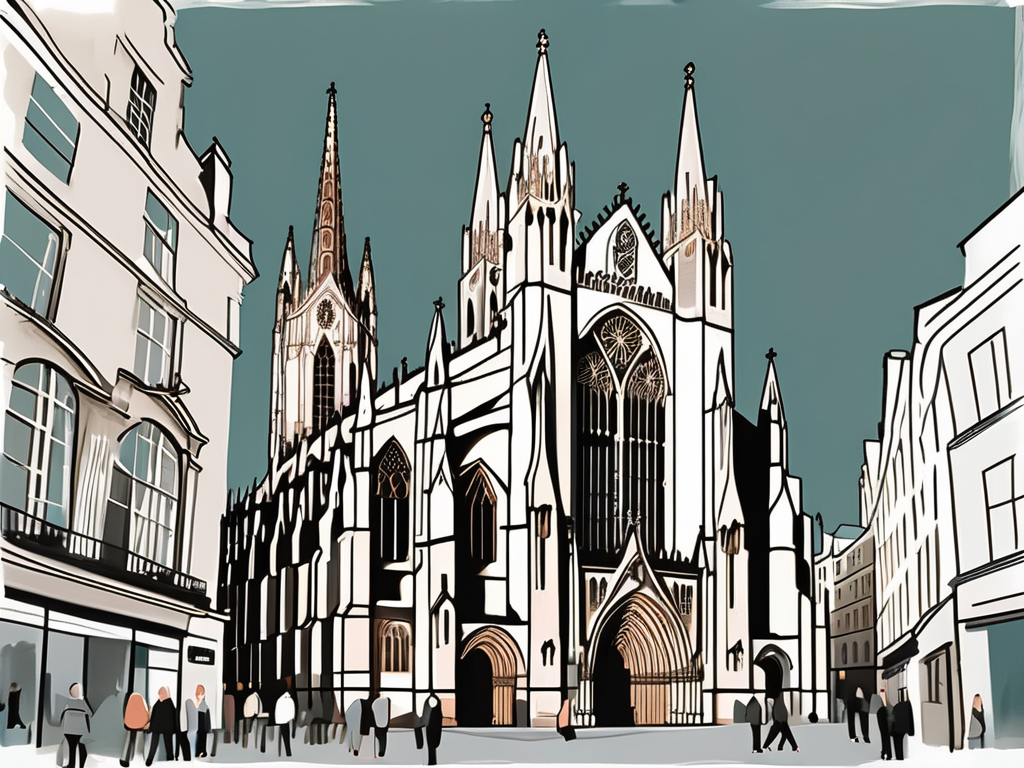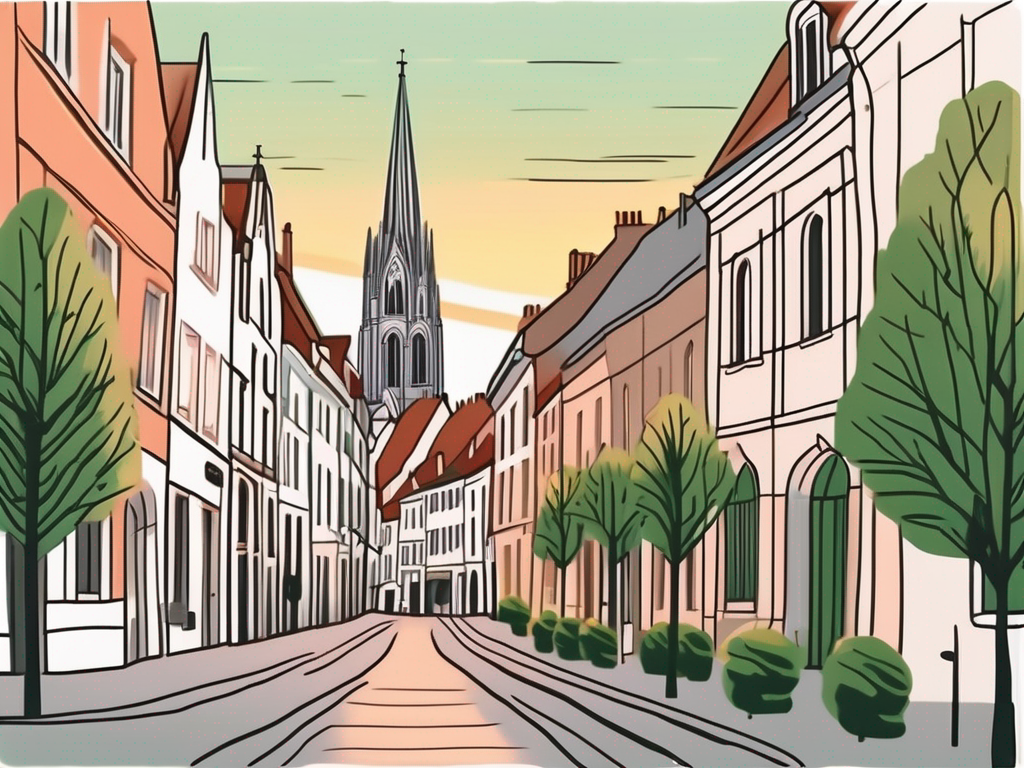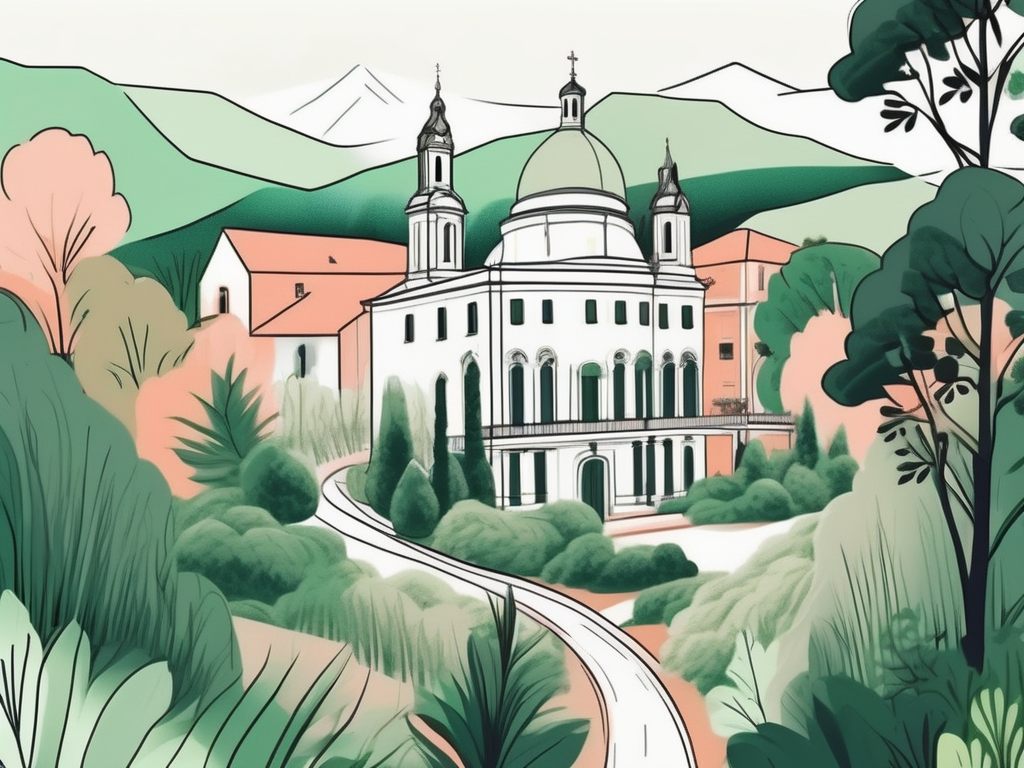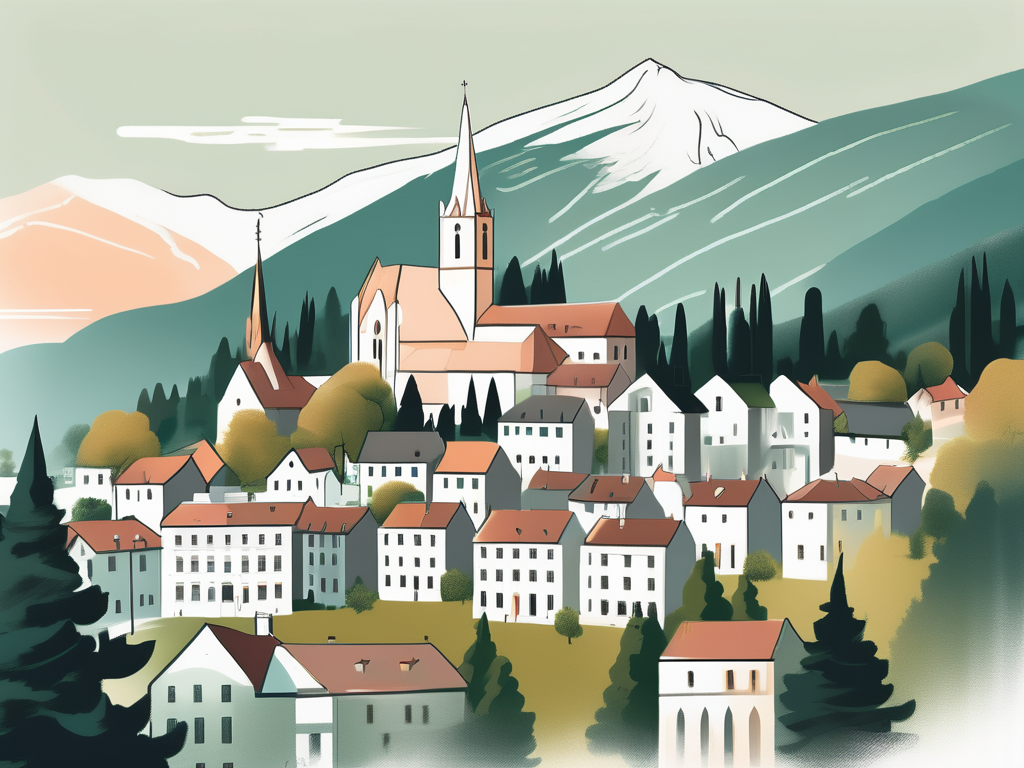Nestled in the northeastern corner of Switzerland, the city of Saint Gall boasts a rich history and a vibrant cultural heritage. From its humble beginnings to its present-day significance, this charming city has left an indelible mark on Swiss history and culture. Let’s take a closer look at the historical significance, cultural heritage, architectural marvels, art and literature, and the modern-day role of Saint Gall.
The Historical Significance of Saint Gall
At the heart of Saint Gall’s history lies its fascinating founding tale. Legend has it that in the 7th century, an Irish monk named Gall sought solace and spirituality in this idyllic region. Inspired by nature’s beauty, he established a hermitage that later grew into the famed Abbey of Saint Gall.
The founding of Saint Gall marked the beginning of a remarkable journey for this humble settlement. Gall’s hermitage soon became a center of learning, attracting scholars from near and far. The tranquil surroundings provided the perfect environment for intellectual pursuits, and the Abbey of Saint Gall quickly gained a reputation as a beacon of knowledge and enlightenment.
As word of the abbey’s scholarly pursuits spread, pilgrims and students flocked to Saint Gall, seeking wisdom and guidance. The abbey’s library, renowned for its vast collection of manuscripts, became a treasure trove of knowledge, drawing scholars from all corners of Europe. It was here that countless works of literature, philosophy, and theology were meticulously transcribed and preserved, ensuring their survival for future generations.
The Founding of Saint Gall
Gall’s hermitage soon became a center of learning, attracting scholars from near and far. With its strategic location along trading routes, the settlement gradually transformed into a bustling town, playing a vital role in medieval Europe.
As the town of Saint Gall flourished, it became a hub of commerce and culture. Merchants from distant lands brought exotic goods, spices, and fabrics, enriching the local markets and stimulating economic growth. The town’s strategic location along major trading routes ensured a constant flow of goods, making it a vital link in the medieval trade network.
With prosperity came the construction of magnificent buildings and architectural marvels. The Abbey of Saint Gall, with its grandiose design and intricate artwork, stood as a testament to the town’s wealth and influence. Pilgrims and visitors marveled at the beauty of the abbey, its towering spires reaching towards the heavens, while the abbey’s scriptorium continued to produce masterpieces of calligraphy and illumination.
Key Historical Events in Saint Gall
Over the centuries, Saint Gall witnessed pivotal events that sculpted its destiny. From battles between Roman emperors and Swiss confederates to the ravages of war and cultural exchanges, the city’s history is a tapestry woven with colorful threads of triumph and turmoil.
During the Middle Ages, Saint Gall found itself at the crossroads of power struggles between various factions. The abbey, with its vast wealth and influence, became a coveted prize for ambitious rulers. Countless battles were fought in the surrounding fields, as emperors and confederates vied for control over this strategic stronghold.
Despite the turmoil, Saint Gall managed to preserve its cultural heritage. The abbey’s scriptorium continued to produce illuminated manuscripts, showcasing the artistic prowess of the monks. These precious works of art not only served as religious texts but also provided valuable insights into the society and beliefs of the time.
As the Renaissance swept across Europe, Saint Gall became a center of intellectual and artistic innovation. Scholars and artists flocked to the town, drawn by its rich cultural heritage and vibrant atmosphere. The abbey’s library, now expanded with new acquisitions, became a haven for scholars seeking to unravel the mysteries of the past and explore new avenues of knowledge.
Today, Saint Gall stands as a testament to its rich history and enduring legacy. The abbey, now a UNESCO World Heritage Site, continues to inspire visitors with its architectural splendor and cultural significance. The town itself, with its charming streets and picturesque squares, invites visitors to step back in time and immerse themselves in the captivating history of this remarkable place.
The Cultural Heritage of Saint Gall
As you immerse yourself in the streets and alleys of Saint Gall, you’ll be captivated by the enchanting blend of tradition and modernity. Traditional customs and practices, handed down through generations, are still cherished and celebrated today.
Walking through the charming cobblestone streets of Saint Gall, you can’t help but feel the weight of history on your shoulders. The city’s cultural heritage is deeply ingrained in every aspect of daily life, from the architecture of its buildings to the rhythm of its festivals.
One of the most vibrant celebrations in Saint Gall is the Fasnacht carnival. This lively event takes place in the heart of winter, filling the streets with a riot of color and sound. Locals don elaborate costumes and masks, transforming themselves into fantastical creatures as they dance and sing through the night. The air is filled with laughter and the scent of delicious treats, as food stalls line the streets, offering traditional delicacies like fried dough and mulled wine.
But it’s not just the winter festivities that showcase the city’s cultural heritage. In spring, Saint Gall comes alive with the Sechseläuten festival. This ancient tradition marks the end of winter and the arrival of warmer days. The highlight of the festival is the burning of the Böögg, a snowman-like figure filled with fireworks. As the flames engulf the Böögg, the crowd erupts in cheers, welcoming the arrival of spring and bidding farewell to the cold winter months.
Traditional Customs and Practices
From the vibrant Fasnacht carnival to the stunning Sechseläuten spring festival, these local traditions provide a glimpse into the deep-rooted culture of Saint Gall. Each festivity is accompanied by lively parades, music, dance, and delicious culinary delights.
But the cultural heritage of Saint Gall extends beyond these annual celebrations. The city is home to a myriad of customs and practices that have been passed down through generations. One such tradition is the art of embroidery, which has been perfected by local artisans for centuries. The intricate patterns and delicate stitches tell stories of the city’s history, capturing the essence of Saint Gall’s cultural identity.
Another important aspect of Saint Gall’s cultural heritage is its strong connection to nature. The city’s location, nestled between the rolling hills and picturesque lakes of Switzerland, has shaped the way of life for its inhabitants. The locals have a deep respect for the environment and strive to live in harmony with nature. This can be seen in their sustainable farming practices, as well as their commitment to preserving the surrounding landscapes for future generations.
Saint Gall’s Influence on Swiss Culture
The cultural legacy of Saint Gall extends far beyond its city limits. The city’s historical significance and its rich tapestry of traditions have left an indelible mark on Swiss culture, influencing everything from music and art to literature and architecture.
One of the most notable contributions of Saint Gall to Swiss culture is its influence on music. The city has long been a hub for classical music, with its renowned Abbey Library housing an impressive collection of medieval manuscripts and musical scores. Many composers and musicians have drawn inspiration from the melodies and harmonies found within these ancient texts, creating timeless pieces that continue to resonate with audiences today.
In the world of literature, Saint Gall is known for its prestigious literary festival, which attracts renowned authors and avid readers from around the world. The festival celebrates the written word in all its forms, from poetry and prose to non-fiction and graphic novels. It serves as a platform for literary discussions, book signings, and workshops, fostering a love for literature and encouraging the exchange of ideas.
Architecture is another realm where Saint Gall’s influence can be seen. The city’s stunning cathedral, with its intricate stained glass windows and towering spires, is a testament to the skill and craftsmanship of the past. Its unique blend of Romanesque and Baroque styles has inspired architects throughout the country, shaping the architectural landscape of Switzerland as a whole.
As you explore the cultural heritage of Saint Gall, you’ll discover a city that is deeply rooted in tradition, yet constantly evolving. Its customs and practices, festivals and celebrations, have shaped the identity of the city and its people, leaving a lasting legacy that continues to thrive in the hearts and minds of locals and visitors alike.
Architectural Marvels of Saint Gall
Saint Gall’s architecture is a testament to its glorious past and artistic prowess. The Abbey of Saint Gall, a UNESCO World Heritage site, stands as a masterpiece of Baroque and Rococo architecture, attracting visitors from around the world.
The Abbey of Saint Gall
This architectural gem, dating back to the 8th century, mesmerizes visitors with its ornate frescoes, intricate stucco work, and a world-renowned library housing ancient manuscripts. The abbey’s stunning cathedral is a must-see, with its grand organ and awe-inspiring stained glass windows.
Noteworthy Buildings and Structures
Beyond the abbey, Saint Gall is adorned with remarkable structures that combine modern design with historical significance. From the imposing town hall to the charming Roter Platz square, each edifice tells a story of the city’s evolution and architectural prowess.
Art and Literature in Saint Gall
Saint Gall’s cultural heritage is not limited to its festivals and architectural wonders. The city has also been a nurturing ground for artistic and literary talents throughout history.
Saint Gall’s Contribution to Swiss Art
The city has inspired countless artists with its picturesque landscapes and vibrant atmosphere. From exquisite paintings and sculptures to innovative contemporary art installations, Saint Gall continues to be a haven for artistic expression.
Literary Works Originating from Saint Gall
Over the centuries, Saint Gall has produced renowned writers and thinkers, whose literary works have left an indelible mark on Swiss and international literature. Their words continue to resonate, carrying the essence of Saint Gall’s cultural heritage across borders.
The Modern-Day Saint Gall
Despite the passage of time, Saint Gall remains committed to preserving its rich history and cultural heritage. The city’s modern identity is an enchanting blend of past triumphs and contemporary endeavors.
Preserving History and Culture in the 21st Century
Preservation efforts have ensured that Saint Gall’s architectural treasures and ancient manuscripts can be admired for generations to come. Museums, galleries, and cultural institutions continue to showcase the city’s artistic and historical heritage.
The Role of Saint Gall in Contemporary Switzerland
Saint Gall’s cultural legacy extends beyond its borders. It serves as a cultural hub, hosting international events and attracting visitors who are eager to experience the unique charm of this historical city. From the open-air concerts in its verdant parks to the lively street festivals, Saint Gall continues to breathe life into Swiss culture.
In conclusion, Saint Gall’s rich history and cultural heritage make it a treasure trove for history buffs and culture enthusiasts. As you wander through its streets, you’ll be enchanted by the architectural marvels, inspired by the art and literature, and captivated by the city’s timeless allure. Saint Gall is a testament to the enduring spirit of Switzerland, where the past intertwines seamlessly with the present, creating a vibrant tapestry of tradition and innovation.
